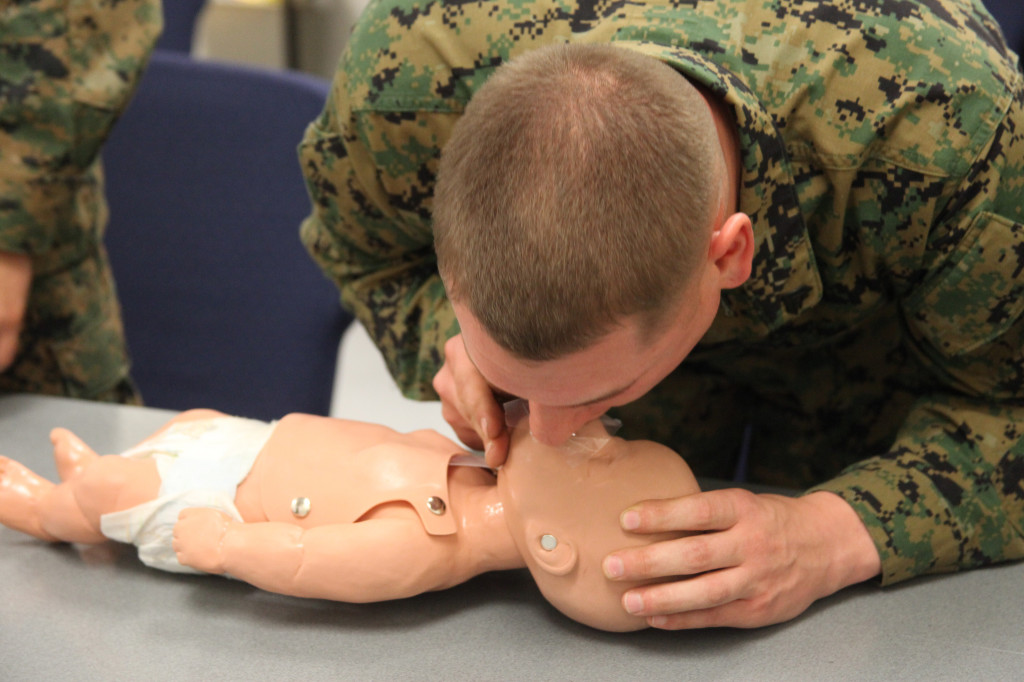CPR: When to Do it and How to Do it Properly

Cardiopulmonary Resuscitation or CPR is a highly effective emergency health procedure that is used when someone’s heart has stopped beating. The procedure employs a combination of intermittent chest compressions and artificial ventilation with the aim of manually preserving intact brain function until further measures are taken to restore unprompted blood circulation and breathing in a person who is in cardiac arrest. CPR is recommended for those who are unresponsive with no breathing or abnormal breathing, particularly if there is no hospital or clinic based emergency care available.
When the heart stops beating, even for a short time, there is a rapid loss of brain function in only a few minutes, and the person can die and be unrecoverable in eight minutes. Getting the heart restarted is the priority, but continuing blood moving through the body and into the brain even if artificially, can be the difference maker in getting some people back to full health.
Contrary to what most people think, CPR alone is not likely to restart the heart. Its main purpose is to restore partial flow of oxygenated blood to the brain and heart. The objective is to delay tissue death and to extend the brief window of opportunity for a successful resuscitation without permanent brain damage. Defibrillation or administration of an electric shock to the subject’s heart is usually needed in order to restore a viable heart rhythm.
Compressions, Airway, Breathing (CAB)
Preparing someone for CPR is an important part of successfully delivering treatment. With an unconscious person it is important to determine the CABs.
Compressions – There is indisputable proof that chest compressions are the most important part of saving the life of someone having a heart attack. It gets both oxygen and blood flowing through the heart and body.
Airway – You should check and make sure that there is nothing obstructing the person’s airway. If there is you should remove it immediately so that air flow is not being restricted. This may be impossible to determine if the person is wearing helmet. The standard rule is never remove a helmet because the person may have a head injury and the helmet is helping to minimize damage. However if the person is not breathing properly it is best to remove the helmet.
Breathing – You should also check and make sure that the person is breathing properly. You can do this by watching the person’s chest for 15 seconds. Is it rising and falling normally? If the answer is yes, the person is breathing fine if not it’s a good indication that the person needs CPR.
Performing CPR
To perform CPR in all of its phases 100% correctly requires CPR training. However, even without training, it’s far better to do something than to do nothing at all, particularly because the difference between you doing something and doing nothing could be someone’s life.
Here’s CPR instructions from the American Heart Association:
- No CPR Training, Hands Only CPR: If you see an infant (but not newborn), child, teen or adult suddenly collapse and has stopped breathing, call 911 and push hard and fast in the center of the chest to the beat of any tune that is 100 to 120 beats per minute. Continue until paramedics arrive.
- Trained to give CPR: Call 911 and if you’re trained, check to see if there is a pulse and breathing. If there is no breathing or a pulse within 10 seconds, begin chest compression. Start CPR with 30 chest compressions before giving two rescue breaths. Continue until paramedics arrive.
CPR is a lifesaver for thousands every year. Use this very important procedure and you may save someone’s life.









